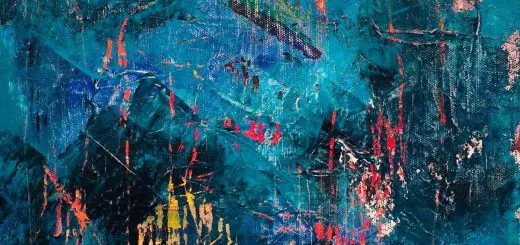Hathor: Goddess of Love and Music

Looking for more amazing products? Check out our online store and explore our collection here! Happy shopping!
Before diving in, please note: This post is for informational purposes only. If you’d like to know more about how we approach topics, feel free to check out our friendly Disclaimer Page.
Hey there, amazing readers! 
We’re committed to delivering quality posts, and your support (even just sticking around despite the ads) means everything to us. So, bear with us, and thanks for helping us keep the good vibes rolling. Now, on to the fun stuff!
TRANSLATE BUTTON AT THE END OF THE ARTICLE
A Quick Overview: Introduction to Hathor: Goddess of Love and Music
Hathor is one of the most well-known deities in ancient Egyptian mythology, revered as the goddess of love, beauty, music, dance, fertility, and joy.
She was often depicted as a cow goddess or as a woman with the horns of a cow, symbolizing her maternal and nurturing qualities.
Hathor’s influence extended beyond Egypt, as she was also venerated in other parts of the ancient world, including Nubia and Canaan.
Her worship was widespread and enduring, with temples dedicated to her found throughout Egypt.
This article will delve into the origins, mythology, symbols, and significance of Hathor in ancient Egyptian religion, as well as explore her enduring legacy in art and culture.
Origins and Mythology of Hathor
Hathor’s origins can be traced back to the early dynastic period of ancient Egypt, with her name meaning "House of Horus" or "Mansion of Horus." She was often considered the daughter of the sun god Ra and the wife of Horus, the god of the sky.
Hathor was associated with the nurturing and protective aspects of motherhood, as well as with the creative and destructive powers of the sun.
In some myths, she was also linked to the sky goddess Nut and the earth god Geb, further emphasizing her role as a cosmic deity.
Hathor’s Role in Ancient Egyptian Religion
Hathor played a crucial role in the religious beliefs of the ancient Egyptians, serving as a mediator between the gods and humans and as a protector of the deceased in the afterlife.
She was also closely associated with the concept of Ma’at, which represented harmony, balance, and truth in Egyptian society.
Hathor was believed to bring joy, love, and prosperity to the people, and her presence was thought to ensure the fertility of the land and the abundance of crops.
Symbols and Depictions of Hathor
Hathor was often depicted as a woman with the ears or horns of a cow, wearing a sun disk or a pair of cow horns on her head.
She was also portrayed as a cow goddess, emphasizing her nurturing and maternal nature.
Other symbols associated with Hathor included the sistrum (a musical instrument), the menat (a ritual necklace), and the ankh (the symbol of life).
These symbols reflected Hathor’s roles as a goddess of music, dance, fertility, and life.
Temples and Worship of Hathor
Temples dedicated to Hathor were widespread throughout ancient Egypt, with the most famous one located at Dendera in Upper Egypt.
These temples served as centers of worship, music, dance, and celebration in honor of Hathor.
Priests and priestesses devoted themselves to her cult, performing rituals, offering sacrifices, and conducting ceremonies to appease and honor the goddess.
Hathor’s worship was an integral part of Egyptian religious life, with festivals and processions held in her honor throughout the year.
Hathor’s Connection to Love and Fertility
As the goddess of love and fertility, Hathor was revered for her ability to bring joy, passion, and abundance to the lives of the people.
She was often invoked in matters of love, marriage, and childbirth, with devotees seeking her blessing for romantic relationships and family life.
Hathor’s association with fertility extended to the agricultural realm, where she was believed to ensure a bountiful harvest and the prosperity of the land.
Her nurturing and life-giving qualities made her a beloved and revered deity in ancient Egyptian society.
Hathor’s Influence on Music and Dance
Hathor was also revered as the goddess of music, dance, and entertainment, with her worship often accompanied by music, singing, and dancing.
The sistrum, a musical instrument associated with Hathor, was used in religious ceremonies and festivals to create rhythmic sounds that were believed to please the goddess.
Hathor’s connection to music and dance was seen as a way to invoke joy, ecstasy, and transcendence in worshipers, allowing them to connect with the divine through artistic expression and creative energy.
Hathor’s Relationship with Other Deities
Hathor had close associations with several other deities in the Egyptian pantheon, including Ra, Horus, Isis, Osiris, and Bastet.
She was often linked to the sun god Ra, embodying the nurturing and life-giving aspects of the sun’s rays.
Hathor was also seen as a protective mother figure, akin to Isis, the goddess of magic and motherhood, and as a symbol of femininity and sensuality, like the cat goddess Bastet.
Her relationships with other deities reflected her multifaceted nature as a goddess of love, music, fertility, and joy.
Festivals and Celebrations in Honor of Hathor
Throughout the year, various festivals and celebrations were held in honor of Hathor, marking important moments in the agricultural calendar and the religious calendar of ancient Egypt.
The most prominent festival dedicated to Hathor was the "Feast of Drunkenness," which celebrated the goddess’s joyful and exuberant nature.
During this festival, devotees engaged in music, dance, feasting, and revelry to honor Hathor and to invoke her blessings for a prosperous year ahead.
Other festivals included the "Beautiful Feast of the Valley" and the "Hathor Procession," where statues of the goddess were paraded through the streets amidst much fanfare and adulation.
Hathor’s Modern Interpretations and Representations
In modern times, Hathor continues to be revered and celebrated by contemporary Pagans, Wiccans, and practitioners of Egyptian neopaganism.
Her image and symbolism have been adapted and incorporated into various forms of art, jewelry, literature, and popular culture, reflecting her enduring legacy as a goddess of love, music, and joy.
Hathor’s influence can be seen in the use of cow motifs, sistrum designs, and ancient Egyptian aesthetics in modern fashion and design.
Her representation in films, novels, and video games has also contributed to her enduring popularity and appeal in the modern world.
The Legacy of Hathor in Art and Culture
Hathor’s legacy as the goddess of love and music has left a lasting impact on art, music, and culture throughout history.
Artists, musicians, and dancers have drawn inspiration from Hathor’s myths and symbols, incorporating them into their works to evoke feelings of love, beauty, and creativity.
Hathor’s presence can be felt in the melodies of ancient Egyptian music, the movements of sacred dance, and the visual representations of her divine form in paintings, sculptures, and reliefs.
Her enduring significance in art and culture serves as a testament to the timeless appeal of the goddess of love and music.
Conclusion: Hathor’s Enduring Significance in History
In conclusion, Hathor remains a revered and beloved figure in ancient Egyptian religion, known for her roles as the goddess of love, beauty, music, dance, fertility, and joy.
Her influence extended beyond Egypt, as she was venerated in other regions of the ancient world and continues to be honored by modern practitioners of paganism and neopaganism.
Hathor’s enduring significance in history is evident in the temples dedicated to her, the festivals held in her honor, and the artistic representations of her divine essence.
As a symbol of love, music, and creativity, Hathor’s legacy lives on in the hearts and minds of those who seek inspiration, beauty, and harmony in their lives.

The Enlightenment Journey is a remarkable collection of writings authored by a distinguished group of experts in the fields of spirituality, new age, and esoteric knowledge.
This anthology features a diverse assembly of well-experienced authors who bring their profound insights and credible perspectives to the forefront.
Each contributor possesses a wealth of knowledge and wisdom, making them authorities in their respective domains.
Together, they offer readers a transformative journey into the realms of spiritual growth, self-discovery, and esoteric enlightenment.
The Enlightenment Journey is a testament to the collective expertise of these luminaries, providing readers with a rich tapestry of ideas and information to illuminate their spiritual path.
Our Diverse Expertise
While our primary focus is on spirituality and esotericism, we are equally passionate about exploring a wide range of other topics and niches 

To ensure we provide the most accurate and valuable insights, we collaborate with trusted experts in their respective domains 
Our blog originally focused on spirituality and metaphysics, but we’ve since expanded to cover a wide range of niches. Don’t worry—we continue to publish a lot of articles on spirituality! Frequently visit our blog to explore our diverse content and stay tuned for more insightful reads.
Hey there, amazing reader! 
Check out our store here and take a peek at some of our featured products below! Thanks for being awesome!











